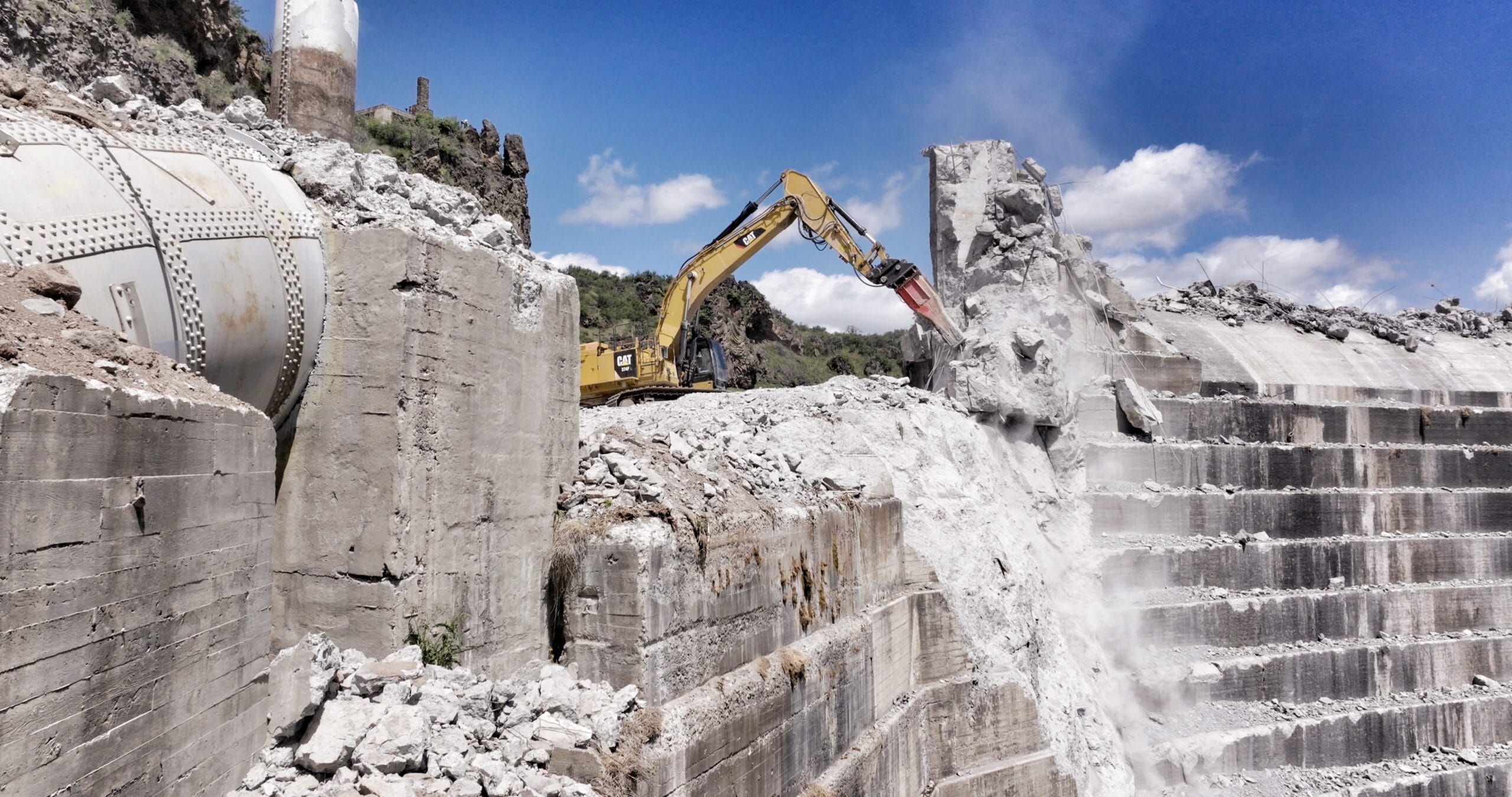
Blasting at Copco 1 Dam. Photo: Swiftwater Films
Big things happen when committed people decide that failure is not an option
Between my roles at Trout Unlimited and on the board of directors at the Klamath River Renewal Corporation (KRRC), I’ve visited Iron Gate Dam countless times over the years. But this time, it was different. This time that massive wall was gone, and the Klamath was reconnected for the first time in more than a century.
We knew it would be, but still. As our group walked up the familiar road to the dam’s face, there were audible gasps and more than a few laughs and tears. The dam was gone.
It is an astounding view. Iron Gate had been over 500 feet wide and stood as tall as a seventeen-story building. The farthest downstream of four Klamath barriers dismantled over the past year in the largest dam removal project in history, it had impounded a reservoir covering over 1,000 acres and more than 200 feet deep. From this point in the watershed, the dam had blocked anadromous fish from reaching a staggering 420 miles of spawning and rearing habitat.
Now, instead of the dam, the reservoir and the hatchery, the beautiful Klamath River is flowing through the canyon. On either side of the river, fields of native vegetation, the result of millions of seeds gathered and planted by contractors and the Yurok Tribe as the reservoir drained, are taking hold and growing.
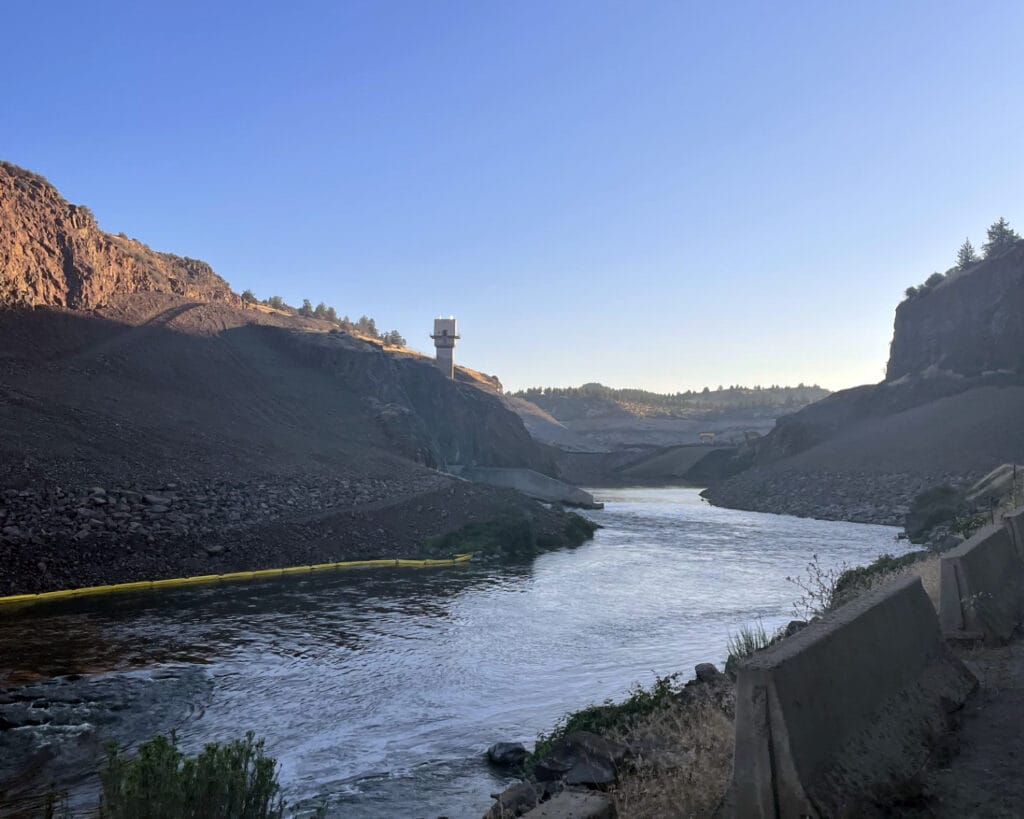
In the blink of an eye, they’re gone
After decades of advocacy, trials, negotiations, delays, permitting and planning, the dams came out in what felt like the blink of an eye.
The KRRC and its contractors removed Copco 2, the smallest of the four dams, last summer. In January, they began draining the three remaining reservoirs. Removal of Copco 1 began in March. By the time KRRC board members and I visited in late June, that dam was almost gone. The same day, Iron Gate removal was getting started. JC Boyle was gone before I had a chance to visit.
Good weather and extensive planning meant the work proceeded smoothly and ahead of schedule. Now, with a steady stream of dump trucks hauling away a million cubic yards of material, all four dams are gone.
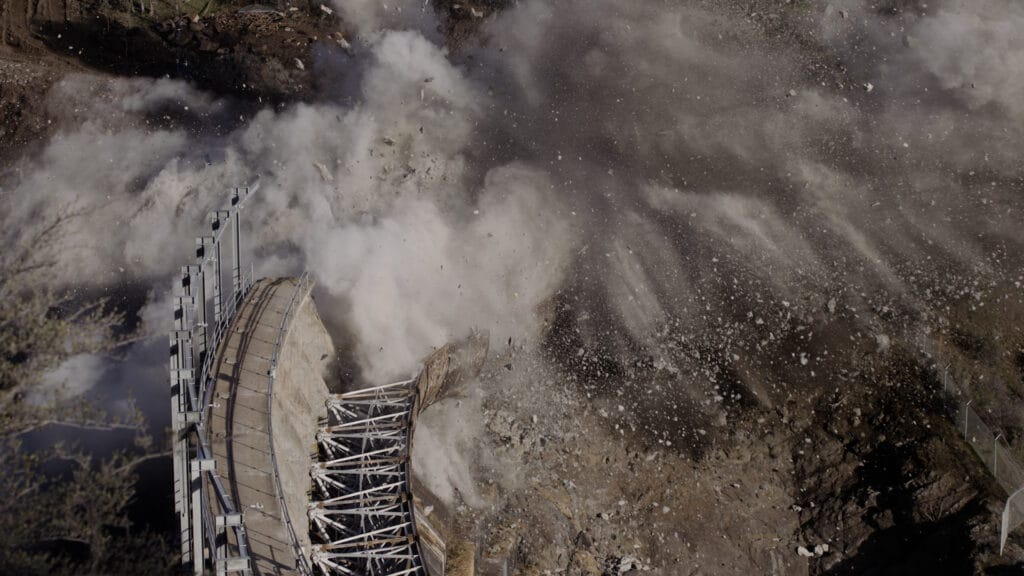
Salmon and steelhead are on their way
This week, the crew breached the small coffer dams that routed the river around the worksites at Copco 1 and Iron Gate. The Klamath River is now running free from the ocean up past the former PacifiCorp dams and into Oregon for the first time since 1911. After some remaining clean-up work, Kiewit, the contractor working with the KRRC, will be off the sites in weeks.
Breaching the coffer dams released more sediment downstream and those impacts will be carefully monitored. Aside from some short-term and geographically limited impacts from reservoir drawdown this winter, water quality in the river has remained good enough for human contact and salmon and steelhead all year. Scientists expect the negative effect of the coffer dam breaches to be much less intense, and over an even shorter time frame, than the previous drawdown.
Salmon and steelhead are in the river now. Recent monitoring reports show salmon have made their way as far as the middle Klamath. The first fish will almost certainly move past the former site of Iron Gate in the coming days.
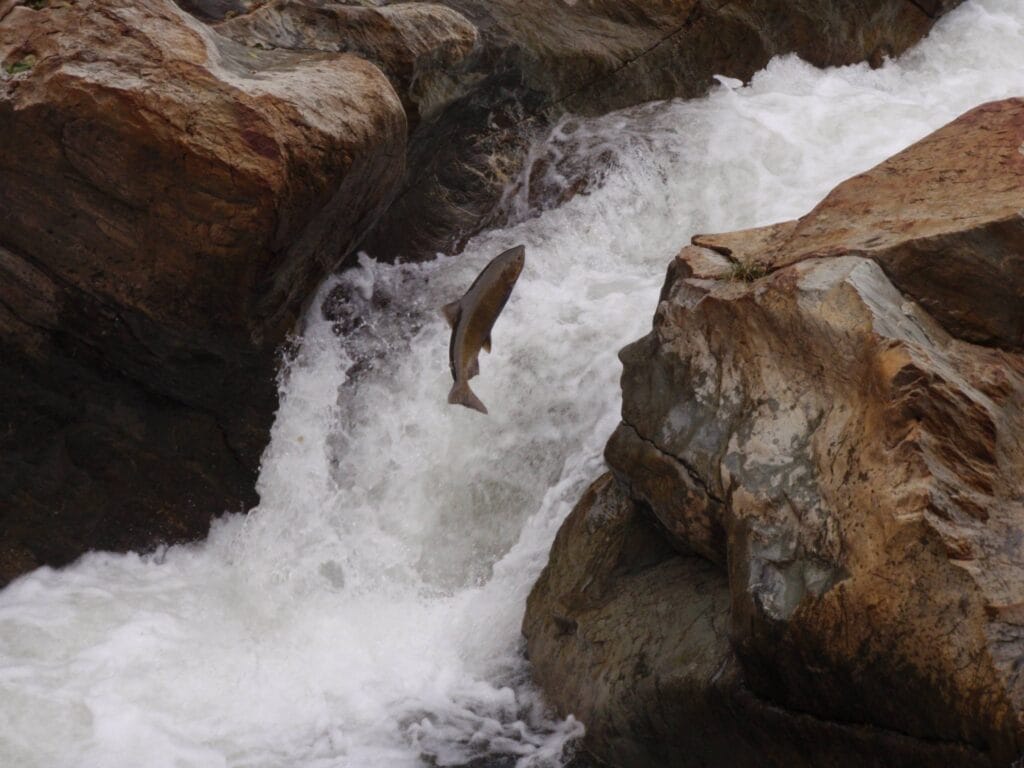
Decades in the making
The reconnected Klamath watershed has been a long time coming. I started working on removing the Klamath dams in 2005, almost exactly when my first child was born. This month, we moved him into his college dorm. And in some circles, I’m still the newcomer.
Led by my friend and colleague Chuck Bonham, Trout Unlimited committed to the work a few years before I joined the organization. The Yurok Tribe, Karuk Tribe, and Klamath Tribes laid the groundwork before that.
I’m grateful to work for an organization that stuck with it all these years. TU’s staff, members, donors and supporters never wavered.
Upstream of the dams, our colleagues in Oregon have been restoring habitat and planning for how to give the returning fish the best chance possible to rebuild their populations. Now that the dams are gone, they are expanding this critical work in the years to come.
I couldn’t be prouder to be part of the coalition that made this moment possible. Successful coalitions require trust. In the Klamath, the basin’s tribal nations came together with conservation organizations, commercial fisherman, recreational anglers and other advocates to build something powerful.
It wasn’t easy. The dam removal campaign had incredible victories and breakthroughs along the way, but it also hit roadblocks that risked being dealbreakers. The effort almost failed several times. But the partners always stepped up to figure out a way forward.
It was a sprawling campaign. The effort spanned grassroots activism, court proceedings, difficult negotiations and thousands of pages of documents required to make this $500 million project possible. Along with key moments where judges ruled and legal agreements were signed, there must be dozens of people who did that one thing, that one day, that really mattered and without which it might not have worked.
Along the way, we took inspiration from efforts to remove the dams on Washington’s Elwha River and Maine’s Penobscot. I know the lessons learned in the Klamath have guided work in places like the Eel and Lower Snake and will inform the work to protect, reconnect and restore other watersheds across the world for years to come.
Failure was never an option
Ultimately, I think the most important lesson is the reminder that big things happen when committed people decide that failure is not an option.
So today, on behalf of Klamath River salmon and steelhead and the communities that cannot live without them, we celebrate all the talented, relentless people who wouldn’t take no for an answer.
We salute everyone who made this moment possible – the activists who lit the fire, the negotiators who worked behind the scenes, the scientists who told us the habitat upstream was viable, the engineers and contractors who made sure the monumental work was accomplished safely, the agency leaders and public officials who supported the complex process and public servants who stayed at the office late at night to fix something that started to go sideways – all of the people who clung to the dream of reconnecting the Klamath River and got it done when everyone said it wasn’t possible.
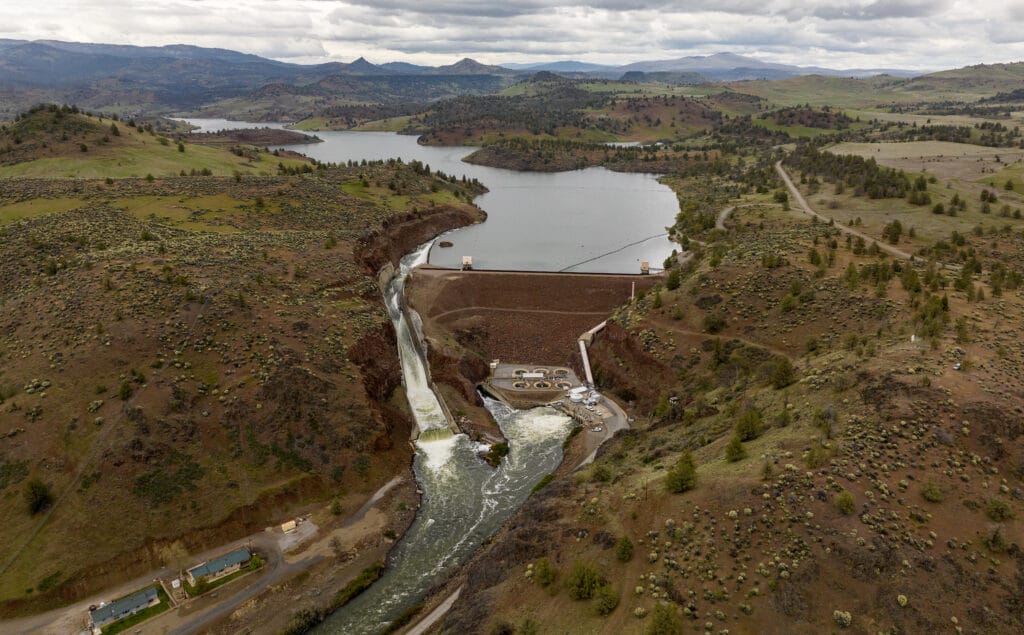
Learn more: Visit Klamath River: Reconnection and Restoration to explore a new StoryMap of the dam sites and watershed, a timeline of the quarter-century effort to reconnect the basin, and resources for TU members and supporters to understand the intertwined story of the long road to dam removal and the restoration work underway upstream in the Klamath’s tributaries and Upper Basin.
Banner image: Blasting at Copco 1 Dam. Photo: Swiftwater Films



Comments